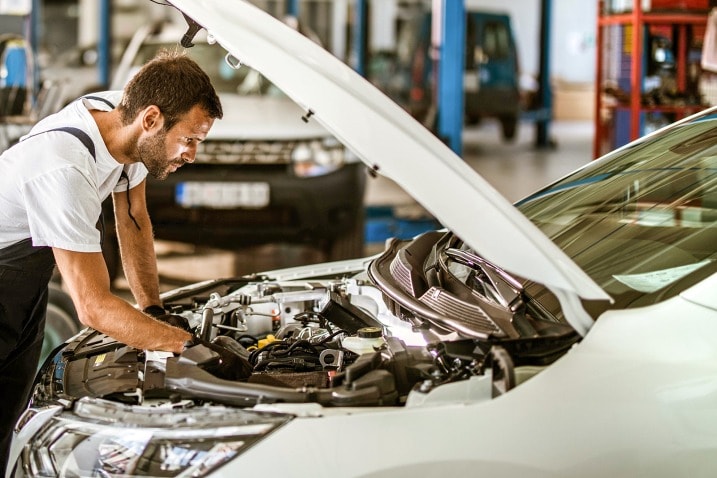All Categories
Featured
Your vehicle's suspension system is a vital part that boosts your driving experience by supplying control, security, and comfort. Right here's a detailed guide to keeping your suspension system in excellent shape.
![]()
Dripping Liquid: Oil around the struts or shocks suggests they might need replacement. Damaged Springs: Cracks or breaks in the springtimes can cause unequal vehicle elevation. Corrosion or Deterioration: Steel components like control arms and bushings are vulnerable to deterioration in time. Have your suspension system inspected by a professional technician. if you discover any irregularities.
Keep tires inflated to the recommended stress. Revolve tires every 5,000 to 7,500 miles. Equilibrium and align wheels every year or after hitting splits or visuals. Uneven tire wear is a common sign of suspension imbalance or used parts.
![]()
Final thought. Proper upkeep of your shock absorber is critical for making sure a risk-free and comfy driving experience. By carrying out regular assessments, replacing used components, keeping tire treatment, and driving responsibly, you can maintain your suspension in peak condition. Positive care not just avoids pricey repair services but also guarantees your lorry's durability and safety for every journey.
- Recognize the Relevance of the Shock Absorber. The suspension system soaks up shocks from uneven roads, supports the car's weight, and maintains the tires strongly in call with the road. It includes shocks, struts, springs, control arms, and bushings, every one of which job with each other to make sure a secure and smooth adventure. Acknowledging its importance is the initial step toward appropriate treatment.
- Conduct Regular Aesthetic Assessments. Constant aesthetic checks can aid recognize prospective concerns early. Try To Find:

Dripping Liquid: Oil around the struts or shocks suggests they might need replacement. Damaged Springs: Cracks or breaks in the springtimes can cause unequal vehicle elevation. Corrosion or Deterioration: Steel components like control arms and bushings are vulnerable to deterioration in time. Have your suspension system inspected by a professional technician. if you discover any irregularities.
- Address Unusual Noises and Signs And Symptoms. Unusual sounds, such as creaking, squeaking, or clunking, typically signal suspension concerns. A bouncy ride, problem steering, or the vehicle drawing to one side suggests that a suspension component might require focus. Don't ignore these indicators; very early detection can stop additional damage.
- Keep Proper Tire Care. Tires and suspension interact to provide a smooth trip. To decrease anxiety on your shock absorber:
Keep tires inflated to the recommended stress. Revolve tires every 5,000 to 7,500 miles. Equilibrium and align wheels every year or after hitting splits or visuals. Uneven tire wear is a common sign of suspension imbalance or used parts.
- Replace Worn-Out Elements on schedule. Suspension parts like shocks, shows off, and bushings break with time. Producers commonly recommend changing shocks and struts every 50,000 to 100,000 miles, relying on driving problems. Postponing replacement can compromise handling, safety and security, and overall vehicle performance.

- Stay Clear Of Overloading Your Lorry. Exceeding your automobile's weight ability places excessive pressure on the shock absorber. This can bring about quicker put on and tear on components like springs and shocks. Constantly examine your owner's handbook for weight restrictions and avoid overloading.
- Drive Sensibly. Hostile driving routines, such as speeding up over pockets, taking edges also quickly, or regularly driving on harsh roadways, can harm your suspension. Method careful driving to lessen wear and expand the life expectancy of your shock absorber.
- Schedule Specialist Evaluations. Routine expert evaluations are crucial for identifying covert issues and guaranteeing optimal performance. Auto mechanics can discover issues that aren't visible during a DIY check, such as worn sphere joints or control arm damages.
Final thought. Proper upkeep of your shock absorber is critical for making sure a risk-free and comfy driving experience. By carrying out regular assessments, replacing used components, keeping tire treatment, and driving responsibly, you can maintain your suspension in peak condition. Positive care not just avoids pricey repair services but also guarantees your lorry's durability and safety for every journey.
Latest Posts
When to Tell When Your Car Needs Professional Vehicle Service at Montclare Auto Repair
Published May 27, 25
1 min read
Explore WyHy FCU – Top Benefits for Your Money Goals
Published May 26, 25
1 min read
Trustworthy Business Roof Services by Weathercraft
Published May 25, 25
1 min read
More
Latest Posts
When to Tell When Your Car Needs Professional Vehicle Service at Montclare Auto Repair
Published May 27, 25
1 min read
Explore WyHy FCU – Top Benefits for Your Money Goals
Published May 26, 25
1 min read
Trustworthy Business Roof Services by Weathercraft
Published May 25, 25
1 min read